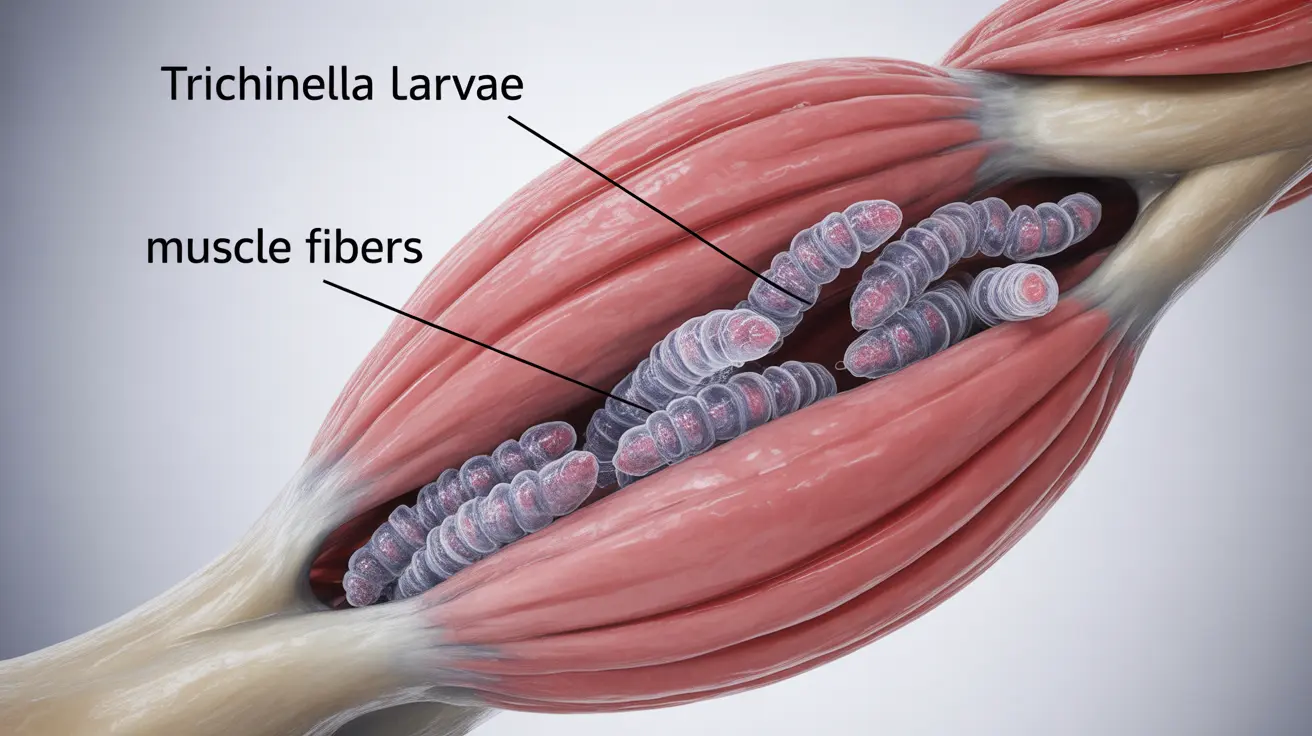Trichinosis is a serious parasitic infection that can occur after consuming undercooked meat containing Trichinella larvae. While commonly associated with pork products, this condition can also arise from eating infected wild game. Understanding its symptoms, effects, and proper prevention methods is crucial for protecting your health.
This comprehensive guide will explore the various aspects of trichinosis, including its potential effects on hair health, which is a concern for many patients. We'll examine the symptoms, diagnosis methods, available treatments, and essential prevention strategies.
Early Signs and Symptoms of Trichinosis
When Trichinella parasites first enter your system, you may experience initial symptoms within 1-2 days of consuming infected meat. These early signs include:
- Nausea and vomiting
- Diarrhea
- Severe abdominal pain
- Fatigue
- Fever and chills
As the parasites begin to migrate through your body and form cysts in your muscles, additional symptoms may develop within 2-8 weeks:
- Muscle pain and tenderness
- Facial swelling
- Eye inflammation
- Weakness
- Headaches
Diagnosis and Testing Procedures
Healthcare providers use several methods to diagnose trichinosis accurately. The diagnosis typically involves:
- Blood tests to check for antibodies
- Muscle biopsy in severe cases
- Assessment of symptoms and exposure history
- Complete blood count to check for elevated white blood cells
Treatment Approaches
Treatment for trichinosis depends on the severity and timing of diagnosis. Common treatment methods include:
- Anti-parasitic medications
- Pain relievers for muscle discomfort
- Corticosteroids for severe inflammation
- Supportive care for symptoms
The Connection Between Trichinosis and Hair Health
While trichinosis itself doesn't directly cause hair loss, the stress on the body and associated inflammatory response can potentially affect hair health. Some patients may notice:
- Temporary hair thinning due to physical stress
- Changes in hair texture during illness
- Slower hair growth during recovery
- Improved hair health once the infection is treated
Prevention Strategies
Preventing trichinosis is primarily about proper food handling and preparation. Essential prevention methods include:
- Cooking pork to an internal temperature of 165°F (74°C)
- Freezing meat at appropriate temperatures and duration
- Avoiding consumption of undercooked wild game
- Using separate cutting boards for raw meat
- Practicing proper hand hygiene when handling raw meat
Frequently Asked Questions
What are the common symptoms of trichinosis after eating undercooked pork or wild game?
Initial symptoms include nausea, diarrhea, and abdominal pain, followed by muscle pain, facial swelling, fever, and fatigue within 2-8 weeks after infection.
How is trichinosis diagnosed and what tests are used to confirm infection?
Diagnosis involves blood tests to detect antibodies, muscle biopsies in severe cases, and evaluation of symptoms and exposure history. Doctors will also perform a complete blood count to check for elevated white blood cells.
What treatments are available for trichinosis and when should they be started?
Treatment should begin as soon as possible after diagnosis and typically includes anti-parasitic medications, pain relievers, and corticosteroids for severe inflammation. Early treatment is crucial for preventing complications.
Can trichinosis cause hair loss or affect the hair in any way?
While trichinosis doesn't directly cause hair loss, the physical stress of the infection may lead to temporary hair thinning or changes in hair texture. These effects typically resolve once the infection is treated.
How can I prevent trichinosis when preparing or cooking meat?
Prevent trichinosis by cooking meat thoroughly to 165°F (74°C), freezing meat properly, avoiding undercooked wild game, using separate cutting boards, and maintaining good kitchen hygiene practices.




